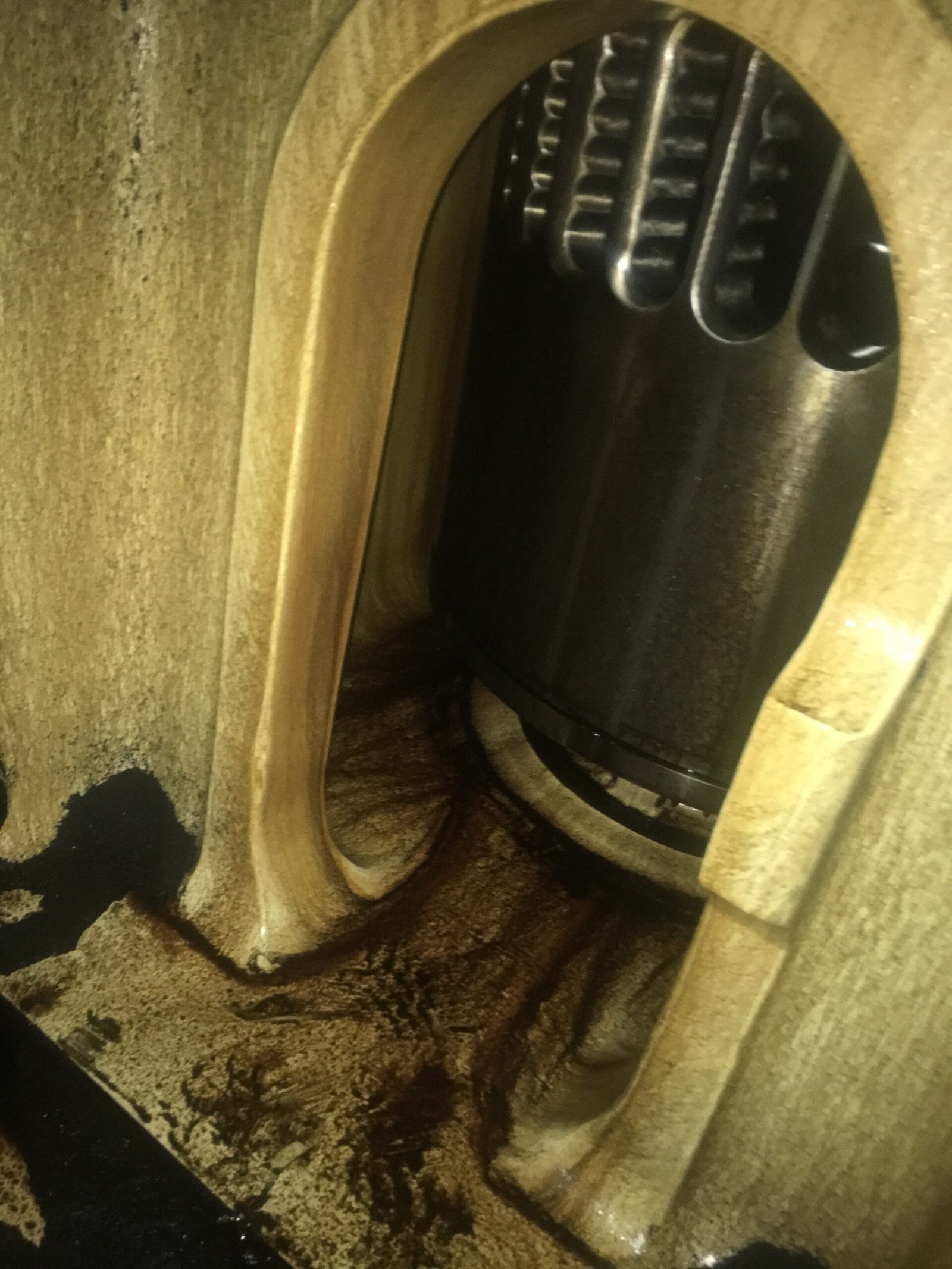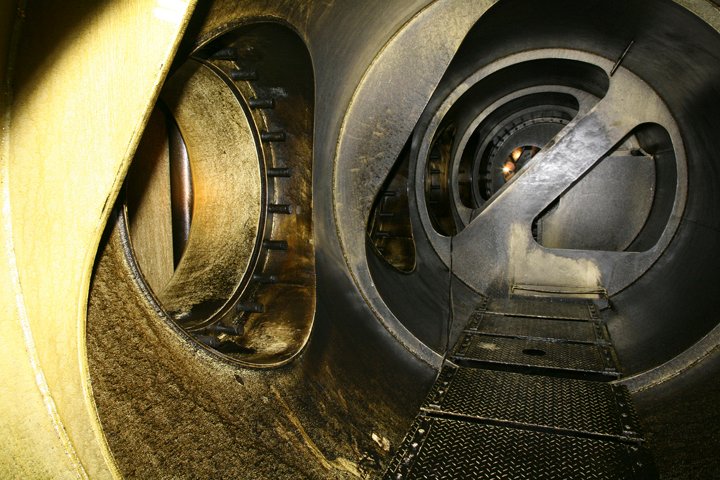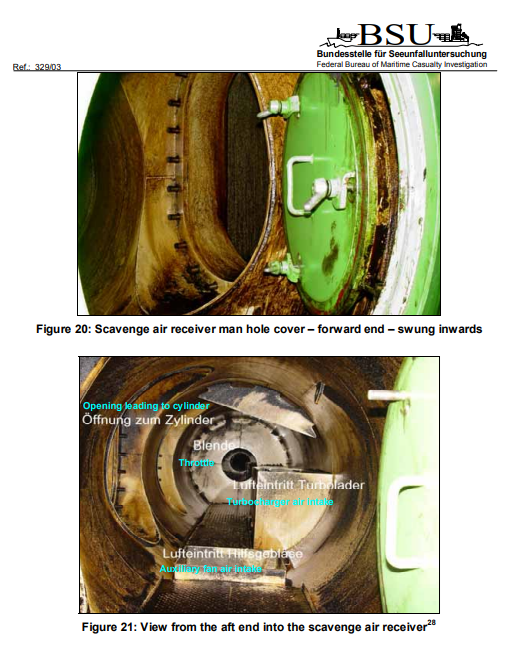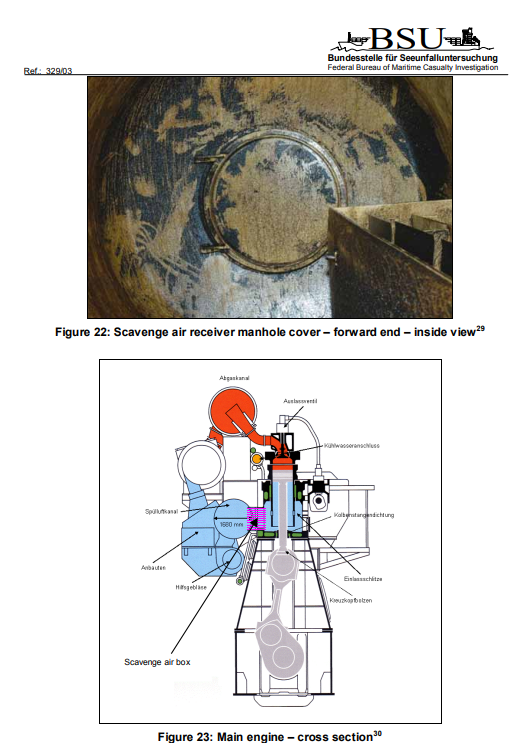
This report was copied and emailed to me a long time ago. I can find its original posting. However, I thought the story teaches important lessons. This was reported on 23rd February 2004.
“The death of a German engineer aboard a container ship was ruled an accident by an interagency investigation team, the U.S. Coast Guard said Tuesday. Marco Krahl, 27, was found dead inside a component of the London Express main engine when the ship arrived at Norfolk International Terminals on Sunday. Krahl was last seen by other crew members when they were working on the engine together Friday in Savannah, Ga. The crew left him in the engine room to get dinner and could not locate him when they returned later that night. The crew members told investigators they assumed he had gone ashore and been delayed. A preliminary autopsy found that Krahl died on Saturday while the vessel was at sea. The cause of death was not immediately known. The London Express is a 964-foot German flagged container ship, operated by Hapag Lloyd. Agencies involved in the investigation included the Virginia Port Authority Police, Virginia State Police, Coast Guard Investigative Services and the Coast Guard Marine Safety Office Hampton Roads. Authorities in Savannah assisted in the search for Krahl on Friday.”

Last Fall a foreign flagged containership during a coastwise voyage reported upon leaving port that the vessel’s second engineer was missing. Despite an extensive search by the vessel’s crew and officers, the individual was presumed to have gone ashore and missed the sailing. Upon arrival at the following port the individual was found deceased behind an access door to the main propulsion engine’s scavenging air receiver.

The vessel was powered by a Burmeister & Wain, 9 cylinder two stroke engine that develops over fifty-five thousand horsepower. The engine’s scavenging air space can be accessed by two manholes located on both ends of the scavenging air receiver.

These circular manholes are secured by three L-shaped dogs having an outer edge that is tightened against an inner circumferential lip on the edge of the access hole. Tightening is achieved by the use a handled fastener.
Coast Guard investigators determined that the engineer entered the scavenging air receiver alone. Although his reason for entering the receiver is not known, engine maintenance was performed in that space while at the first port and he may have returned to inspect the area for left behind tools and materials or to retrieve something. It appears that after his entry, the easily moved hinged / inward-opening door accidentally closed. Investigators believe that at that time, the upper left dog due to its weight and perhaps the vibration of the door as it closed, caused the dog to move allowing its edge to catch the circumferential lip at the opening. Once caught, even with the loosened fastener the door could no longer be opened from the inside of the receiver.

The second engineer was an experienced mariner. It was reported that he was trained and familiar with the vessel’s confined space entry procedure. In all previous instances, he followed the procedures and safely performed maintenance inside the space. Unfortunately, on this occasion he entered without informing anyone or having an assistant stationed outside. Despite various searches by the crew within the machinery spaces and the main engine while the vessel was preparing to sail, he went unnoticed.

Mariners may on occasion not associate certain work areas as confined spaces and therefore not take the precautionary steps needed. Main engine crankcases, scavenging air spaces, exhaust ducting, boiler drums, furnaces, stack casings, condensers, sewage plant tanks and other systems, equipment, and components may present potential “confined space” type hazards.
A confined space may be defined as any location that, by design, has limited openings for entry or egress and is not intended for continuous human occupancy. This definition applies regardless of whether or not the atmosphere is explosive or toxic.
In this casualty, there was initially sufficient quantities of oxygen for the second engineer to breath, at least until the engine started causing the ambient environmental conditions inside the receiver to change dramatically and cause the fatality.

The Coast Guard strongly recommends that:
- All vessels complying with the International Safety Management Code (ISM) have a specific plan for entering confined spaces outlined within their Safety Management System.
- The confined space entry procedures include and identify various types of shipboard spaces such as those previously mentioned that could be encountered and which should be treated as confined spaces.
- Crew safety meetings address the identification of confined spaces and provide instruction on confined space entry procedures.
- Individual crewmembers that work in confined spaces review existing entry procedures and requirements regularly.
- All other vessels and maritime operations falling outside of ISM requirements develop and include in their marine safety programs similar confined space identification and entry procedures.







*EDIT* i have found the original report. click here to read it.




